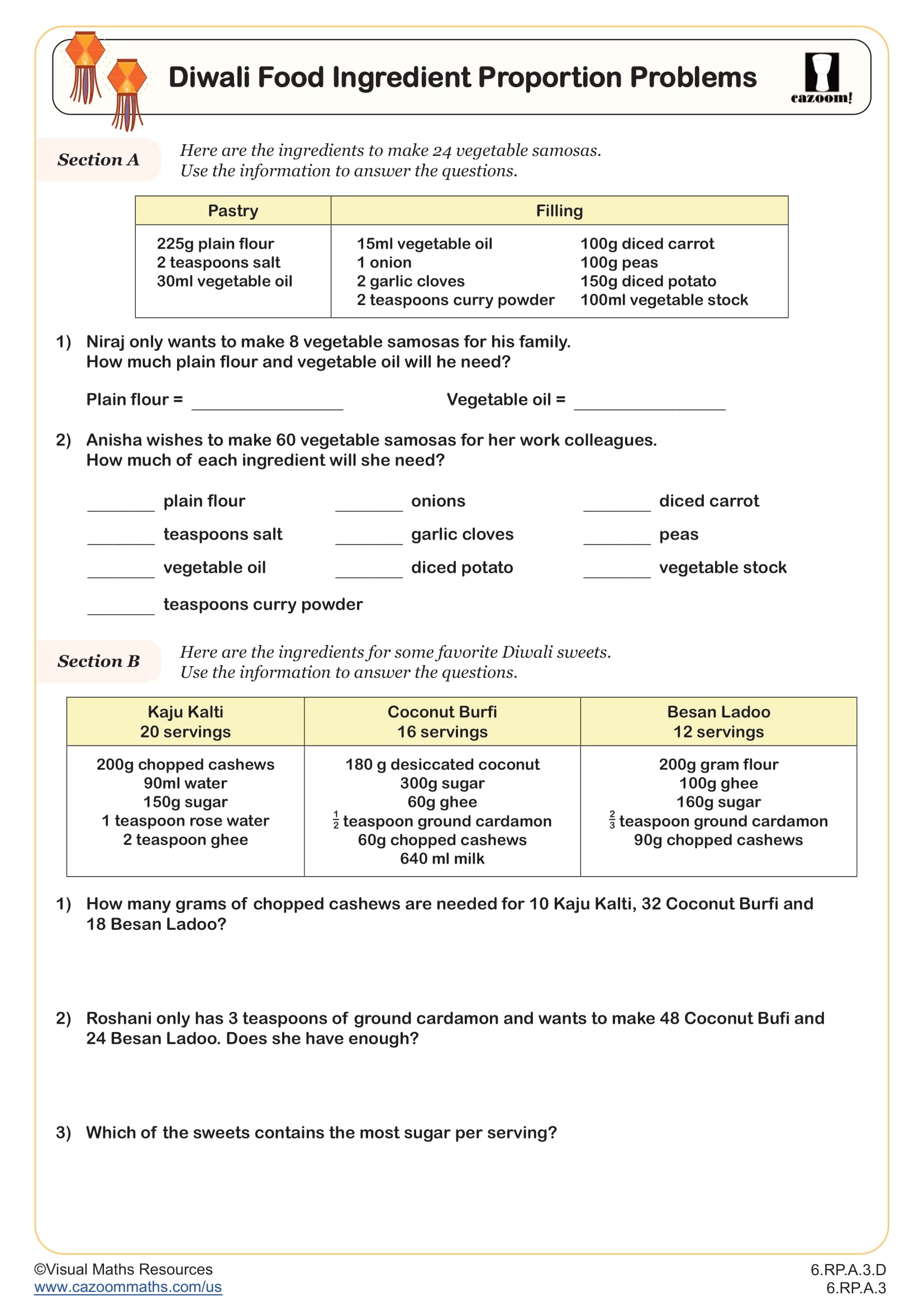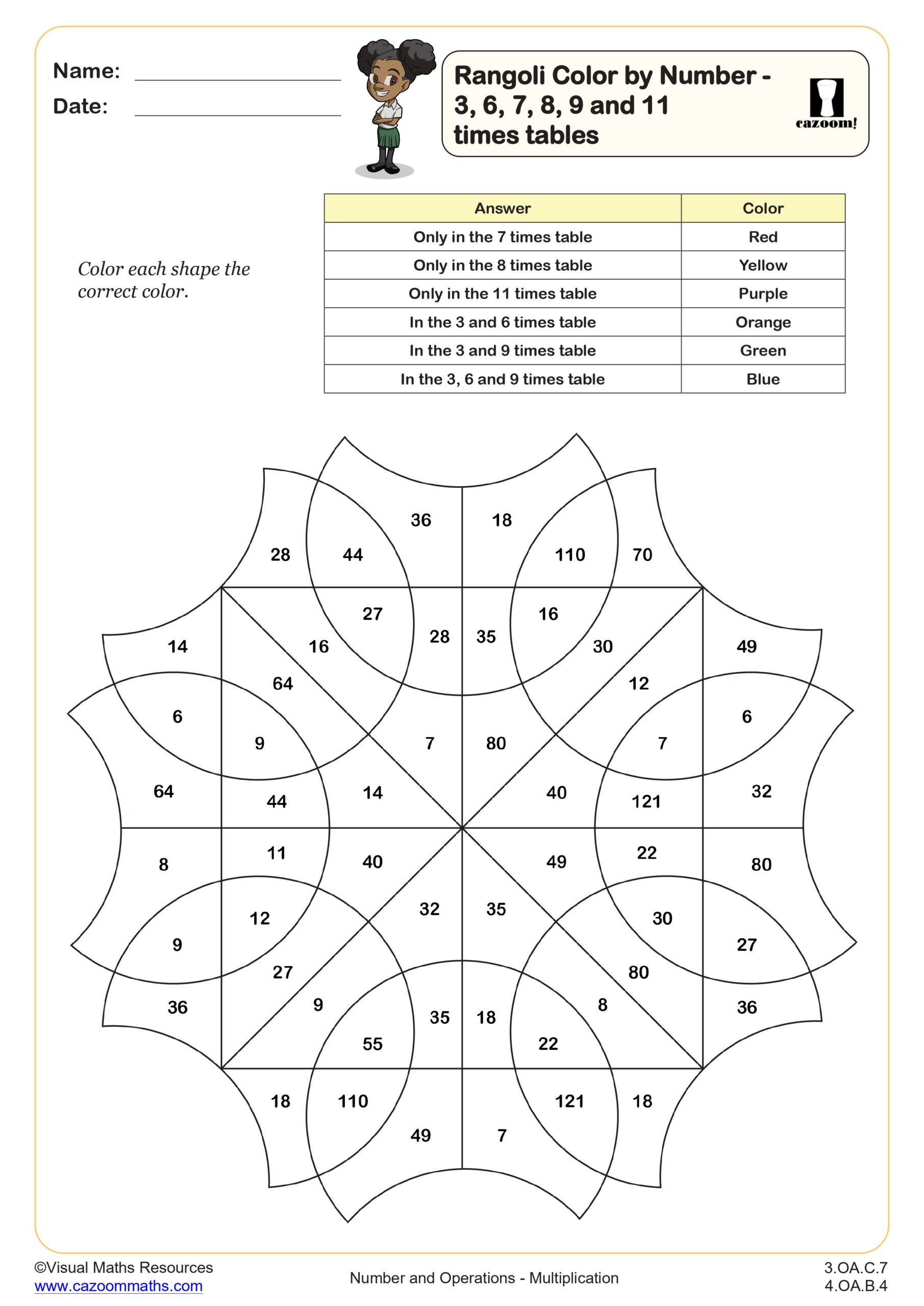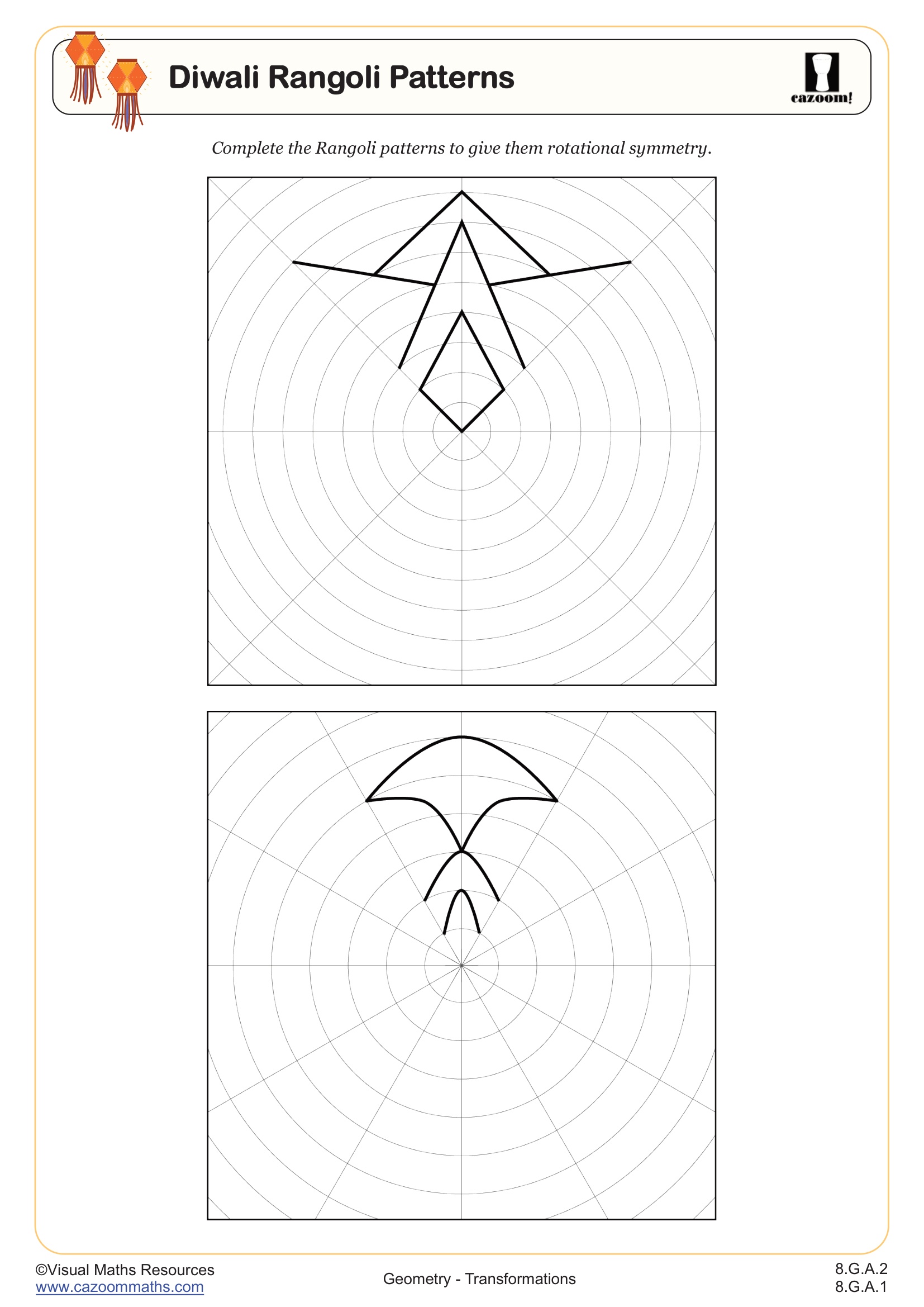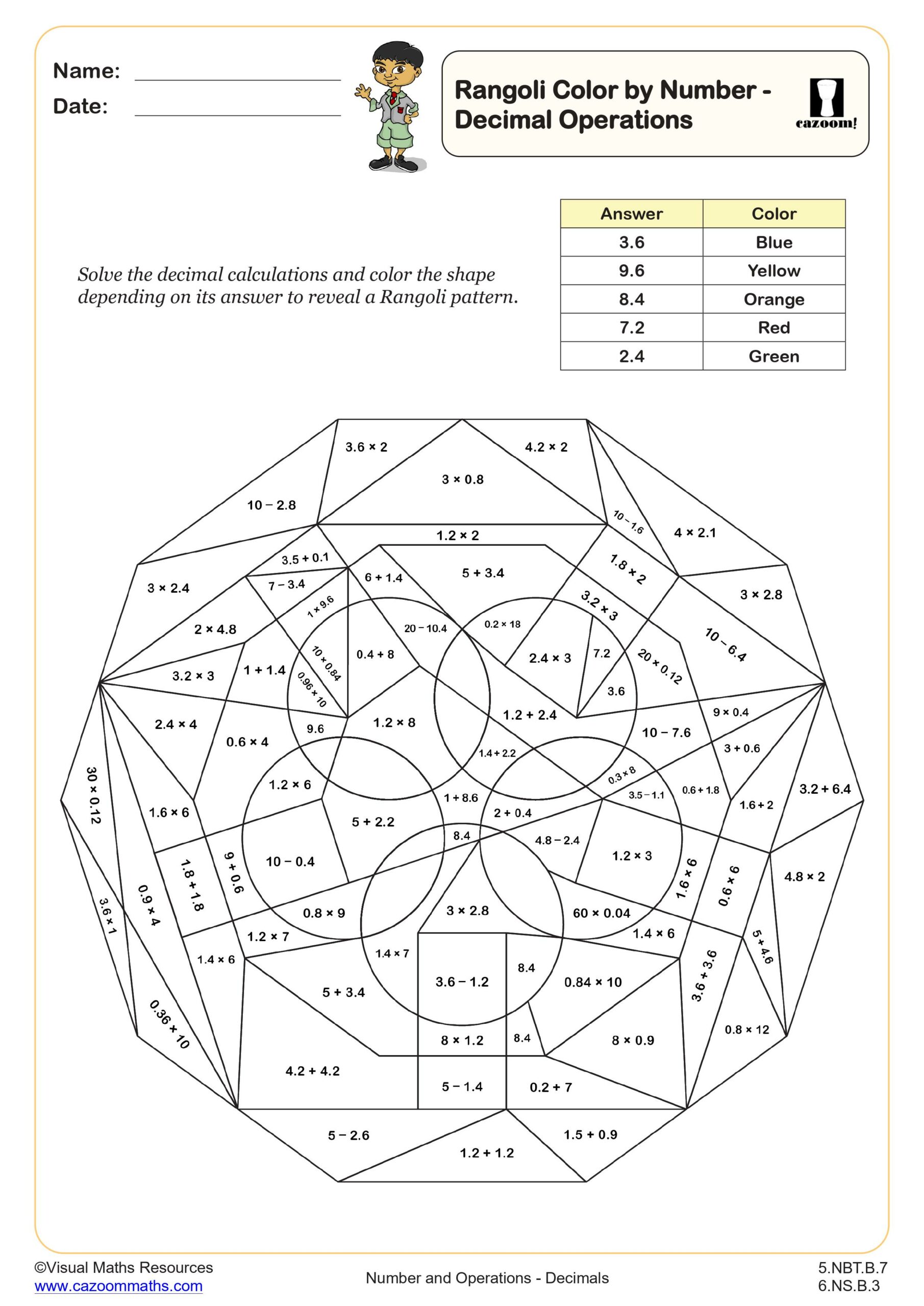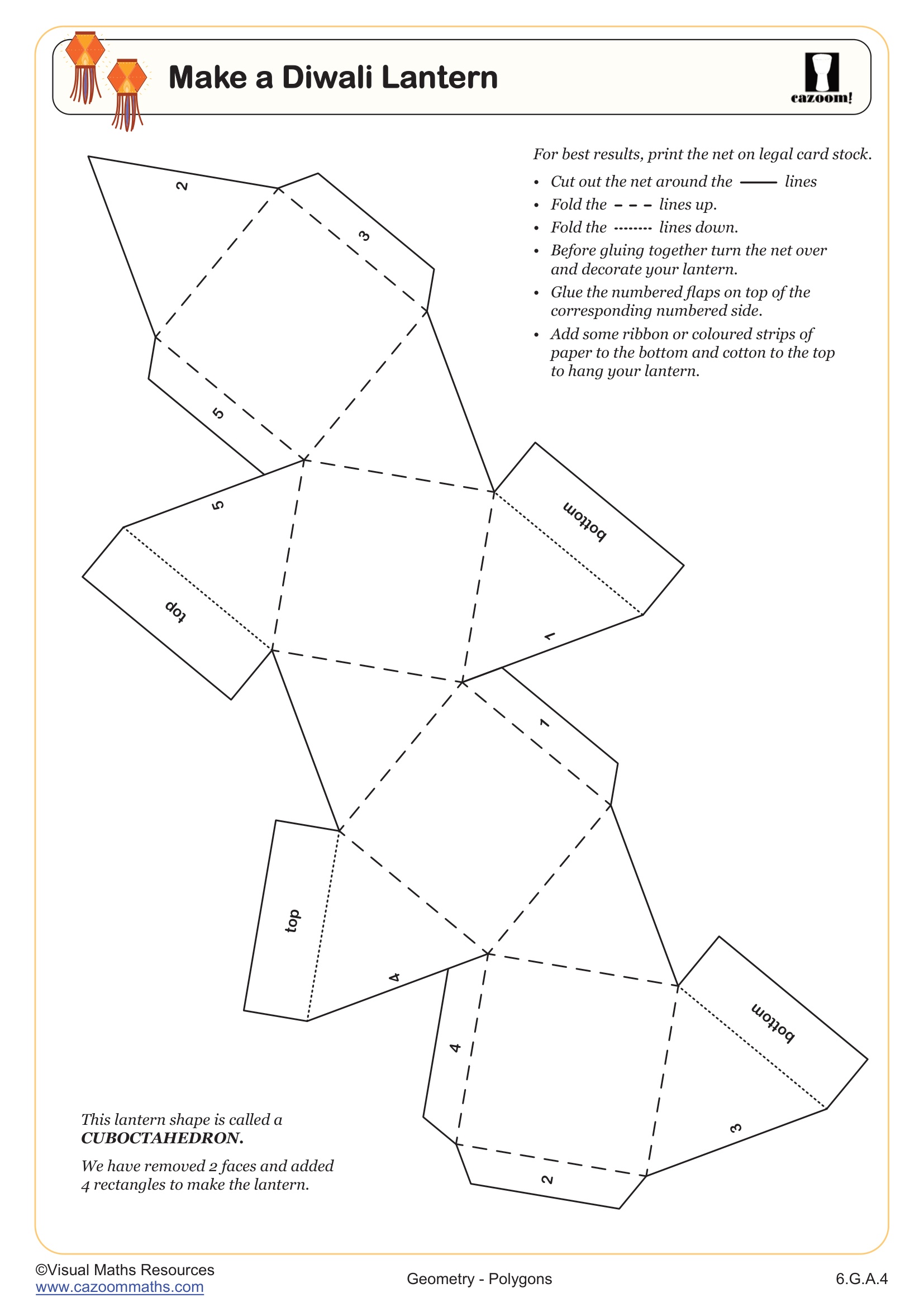Diwali Food Ingredient Proportion Problems WORKSHEET
Suitable for Grades: 6th Grade
CCSS: 6.RP.A.3, 6.RP.A.3.D
CCSS Description: Use ratio and rate reasoning to solve real-world and mathematical problems, e.g., by reasoning about tables of equivalent ratios, tape diagrams, double number line diagrams, or equations. a. Make tables of equivalent ratios relating quantities with whole-number measurements, find missing values in the tables, and plot the pairs of values on the coordinate plane. Use tables to compare ratios. b. Solve unit rate problems including those involving unit pricing and constant speed. For example, if it took 7 hours to mow 4 lawns, then at that rate, how many lawns could be mowed in 35 hours? At what rate were lawns being mowed? c. Find a percent of a quantity as a rate per 100 (e.g., 30% of a quantity means 30/100 times the quantity); solve problems involving finding the whole, given a part and the percent. d. Use ratio reasoning to convert measurement units; manipulate and transform units appropriately when multiplying or dividing quantities.
Use ratio reasoning to convert measurement units; manipulate and transform units appropriately when multiplying or dividing quantities.
Use ratio reasoning to convert measurement units; manipulate and transform units appropriately when multiplying or dividing quantities.
Diwali Food Ingredient Proportion Problems WORKSHEET DESCRIPTION
This worksheet gives learners the opportunity to scale up and down some traditional recipes used to celebrate Diwali. Section A asks learners to solve problems involving the ingredients for vegetable samosas. Section B then gives three Indian sweet recipes and more problems to solve, such as checking the cook has enough ingredients to make multiple batches or calculating the amount of sugar per serving.
